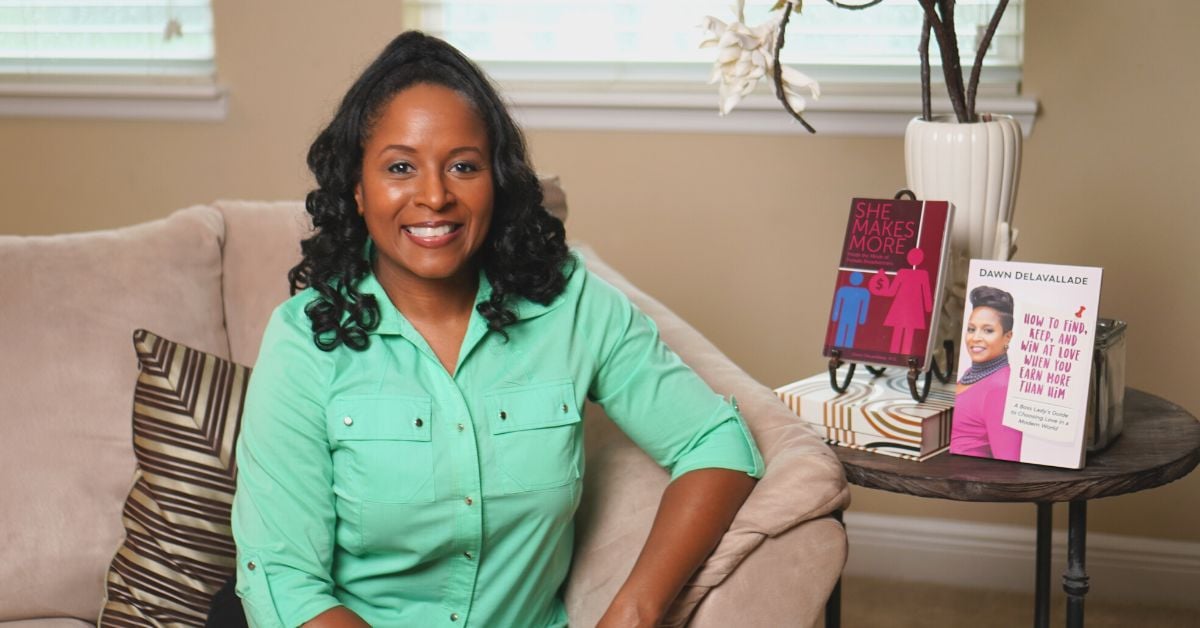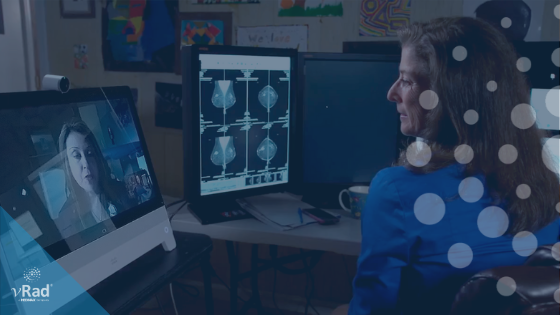1 min read
Women Breadwinners: Relationship Tips for Couples with the Woman as the Higher Earner
In the U.S., 22% of marriages have women breadwinners over the age of 30[1]. These relationships face unique challenges and experience as much as 50%...

Remote radiologist jobs with flexible schedules, equitable pay, and the most advanced reading platform. Discover teleradiology at vRad.

Radiologist well-being matters. Explore how vRad takes action to prevent burnout with expert-led, confidential support through our partnership with VITAL WorkLife. Helping radiologists thrive.

Visit the vRad Blog for radiologist experiences at vRad, career resources, and more.

vRad provides radiology residents and fellows free radiology education resources for ABR boards, noon lectures, and CME.

Teleradiology services leader since 2001. See how vRad AI is helping deliver faster, higher-quality care for 50,000+ critical patients each year.

Subspecialist care for the women in your community. 48-hour screenings. 1-hour diagnostics. Comprehensive compliance and inspection support.

vRad’s stroke protocol auto-assigns stroke cases to the top of all available radiologists’ worklists, with requirements to be read next.

vRad’s unique teleradiology workflow for trauma studies delivers consistently fast turnaround times—even during periods of high volume.

vRad’s Operations Center is the central hub that ensures imaging studies and communications are handled efficiently and swiftly.

vRad is delivering faster radiology turnaround times for 40,000+ critical patients annually, using four unique strategies, including AI.
.jpg?width=1024&height=576&name=vRad-High-Quality-Patient-Care-1024x576%20(1).jpg)
vRad is developing and using AI to improve radiology quality assurance and reduce medical malpractice risk.

Now you can power your practice with the same fully integrated technology and support ecosystem we use. The vRad Platform.

Since developing and launching our first model in 2015, vRad has been at the forefront of AI in radiology.

Since 2010, vRad Radiology Education has provided high-quality radiology CME. Open to all radiologists, these 15-minute online modules are a convenient way to stay up to date on practical radiology topics.

Join vRad’s annual spring CME conference featuring top speakers and practical radiology topics.

vRad provides radiology residents and fellows free radiology education resources for ABR boards, noon lectures, and CME.

Academically oriented radiologists love practicing at vRad too. Check out the research published by vRad radiologists and team members.

Learn how vRad revolutionized radiology and has been at the forefront of innovation since 2001.

%20(2).jpg?width=1008&height=755&name=Copy%20of%20Mega%20Nav%20Images%202025%20(1008%20x%20755%20px)%20(2).jpg)

Visit the vRad blog for radiologist experiences at vRad, career resources, and more.


Explore our practice’s reading platform, breast imaging program, AI, and more. Plus, hear from vRad radiologists about what it’s like to practice at vRad.

Ready to be part of something meaningful? Explore team member careers at vRad.
2 min read
Timothy Myers, MD : December 29, 2011

Over the past several years, the rate at which articles describing, almost alternately, the benefits and risks of screening mammography, seems to have significantly increased. Some of the articles have shed more light on this valuable examination, better defining its role in a women’s health regimen. Others have only further muddied the waters surrounding the somewhat controversial issue of screening mammography. As with any screening examination, there are issues that need to be discussed and better understood by the clinicians and patients who choose to use this tool.
Overload of Mammography Articles
With the emphasis on having patients help direct their healthcare, clinicians and patients are trying to wade through the frequently bewildering and sometimes contentious series of articles on screening mammography. With the increased awareness and review of medical literature by patients, it is more important than ever editors and publications do a better job ensuring that only accurate information enters the debate.
Confusing Articles on Mammography Screening
One of the articles to muddy the waters, further increasing tension and adding to the confusion is the article in the British Medical Journal (BMJ). As noted in a rebuttal by the ACR, this article has major issues and the little information that is new or useful, is lost. Among the serious flaws noted by the ACR is, “The estimated 15 percent reduction in breast cancer deaths used in this study…has been discredited by a series of large randomized control trials and other data that prove the benefit is at least twice that.” Also noted is, “The U.S. government disavowed (the USPSTF recommendations) and barred insurance companies from using them in coverage decisions. A recent Hendrick and Helvie analysis, published in the American Journal of Roentgenology, showed that if USPSTF breast cancer screening guidelines were followed, approximately 6,500 additional women each year in the U.S. would die from breast cancer.
The article does raise some important points regarding false positives. The article discusses QALYs (quality adjusted life years) and, not completely inappropriately, includes the concerns patients have while waiting to follow-up what will later be determined to be a false positive. The idea of including this information in a holistic concept regarding screening mammography is presented in all the wrong ways and the bottom line message of the article seems to equate concern over a false positive study with unnecessary cancer deaths. After wading through the problems with the article, the last line of the conclusion, which should be followed and could be agreed upon by all, is lost, “… the meaning and implications of overdiagnosis and overtreatment need to be much better explained and communicated to any woman considering screening.”
Misleading Information
If the ACR claims are true, and I do not deny their veracity, the natural next question is, “Why and how did this get published?” Rather than ascribe ulterior motives I would ascribe this to bad journalism and bad academic writing; possibly in an effort to get an article on this topic published without much of anything new to say. The main problem is that some clinicians and some women are going to read this article, and in their confusion, they are not going to get appropriate screening. That is going to cost someone their real QALYs and possibly their own or their patients’ lives, and not just the poorly evaluated statistical QALYs noted in the BMJ article.
Editors Need to Put Patients First
Women’s health and indeed every patient’s health is more important than just getting another article into print. If the article is poorly researched, poorly written or poorly documented and it could harm or lead to the death of a patient directly or inadvertently, responsible editors should halt publication before such an article can get into the literature and waste serious investigator’s valuable time invalidating the information or conclusions. It can be argued that every reasonable opinion should be heard and I agree. However, if we put patients first and not the academic concern of silencing a viewpoint, we would see more responsible and better discussions in the future. More importantly, we could also save patient lives by decreasing the amount of confusing, poorly written and inaccurate material available to patients who are desperately trying to understand how they should help their clinician direct their health and medical care.
-Dr. Timothy Myers
Do you think publications have a responsibility to patients?
Back to Blog
1 min read
In the U.S., 22% of marriages have women breadwinners over the age of 30[1]. These relationships face unique challenges and experience as much as 50%...

At the foundation of everything we do at vRad is the goal of helping our clients provide the highest level of patient care regardless of the time and...
.png)
This post was originally going to be about my experience as a mammography technician transitioning to telemammography. But after I started writing, I...
vRad (Virtual Radiologic) is a national radiology practice combining clinical excellence with cutting-edge technology development. Each year, we bring exceptional radiology care to millions of patients and empower healthcare providers with technology-driven solutions.
Non-Clinical Inquiries (Total Free):
800.737.0610
Outside U.S.:
011.1.952.595.1111
3600 Minnesota Drive, Suite 800
Edina, MN 55435